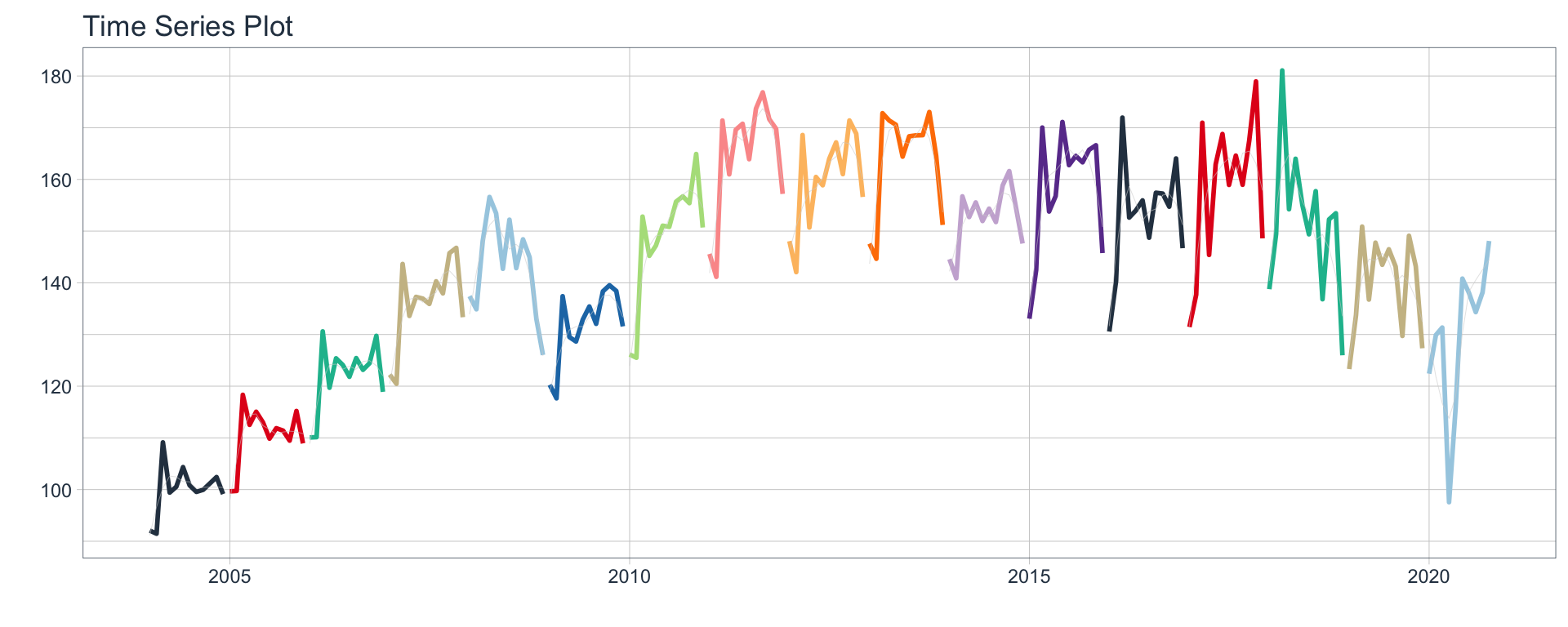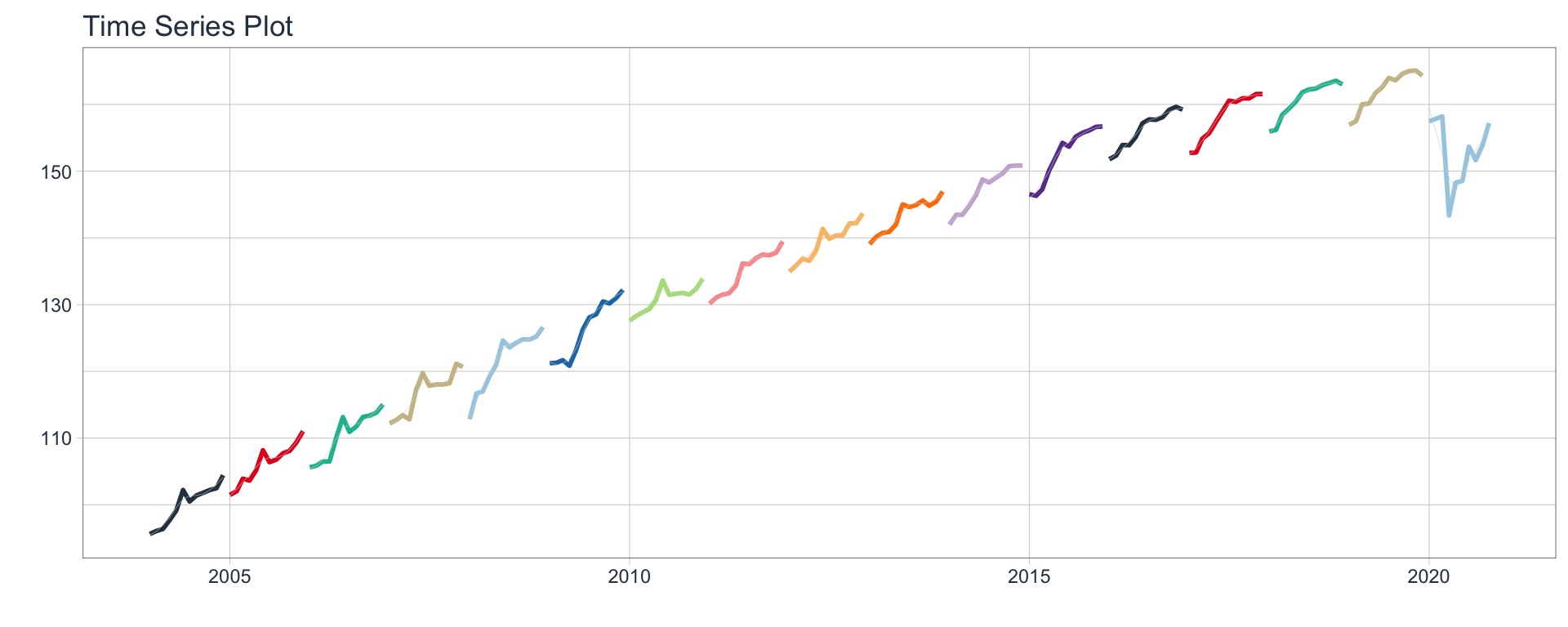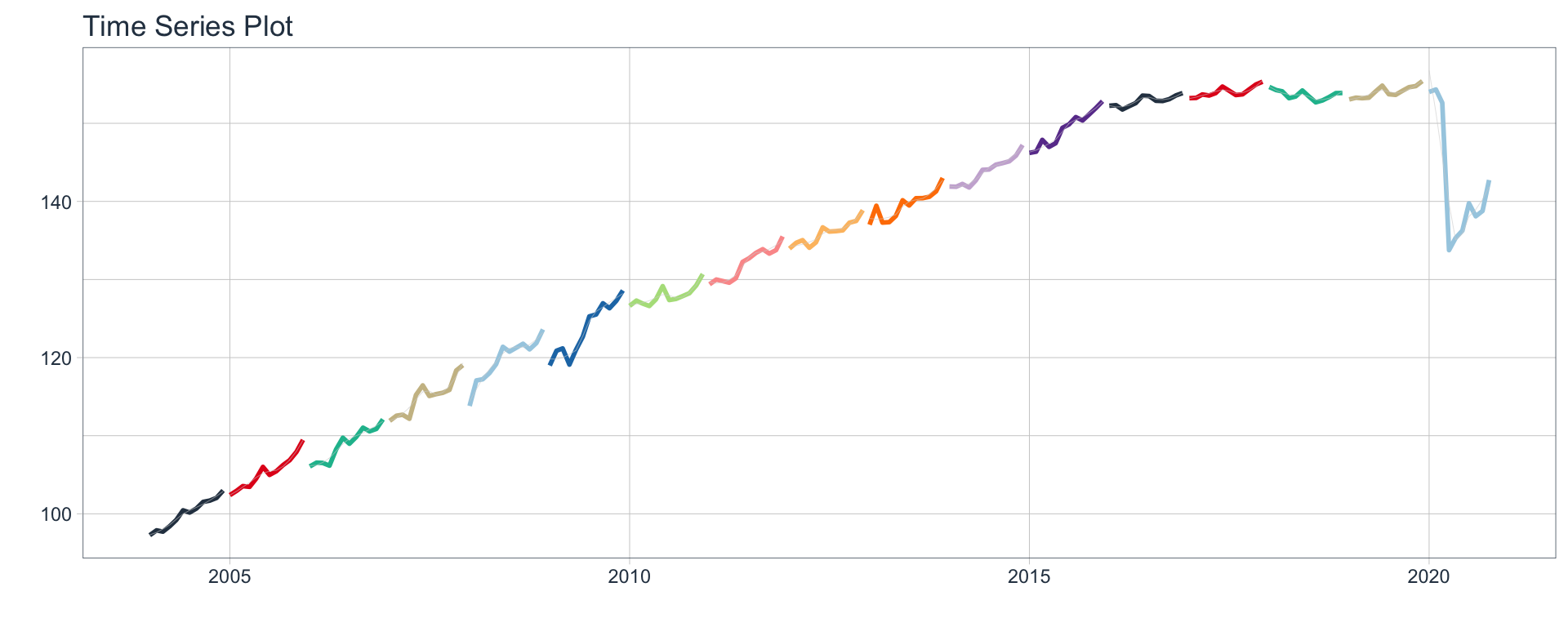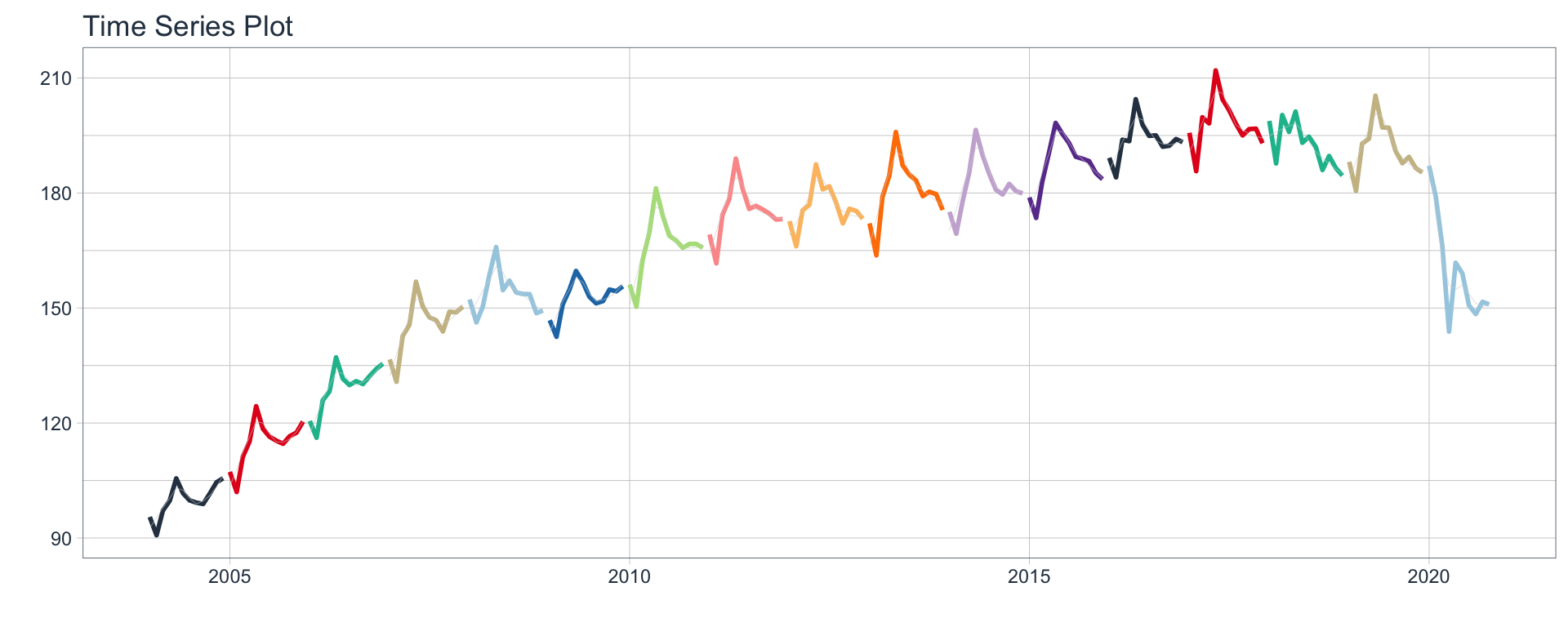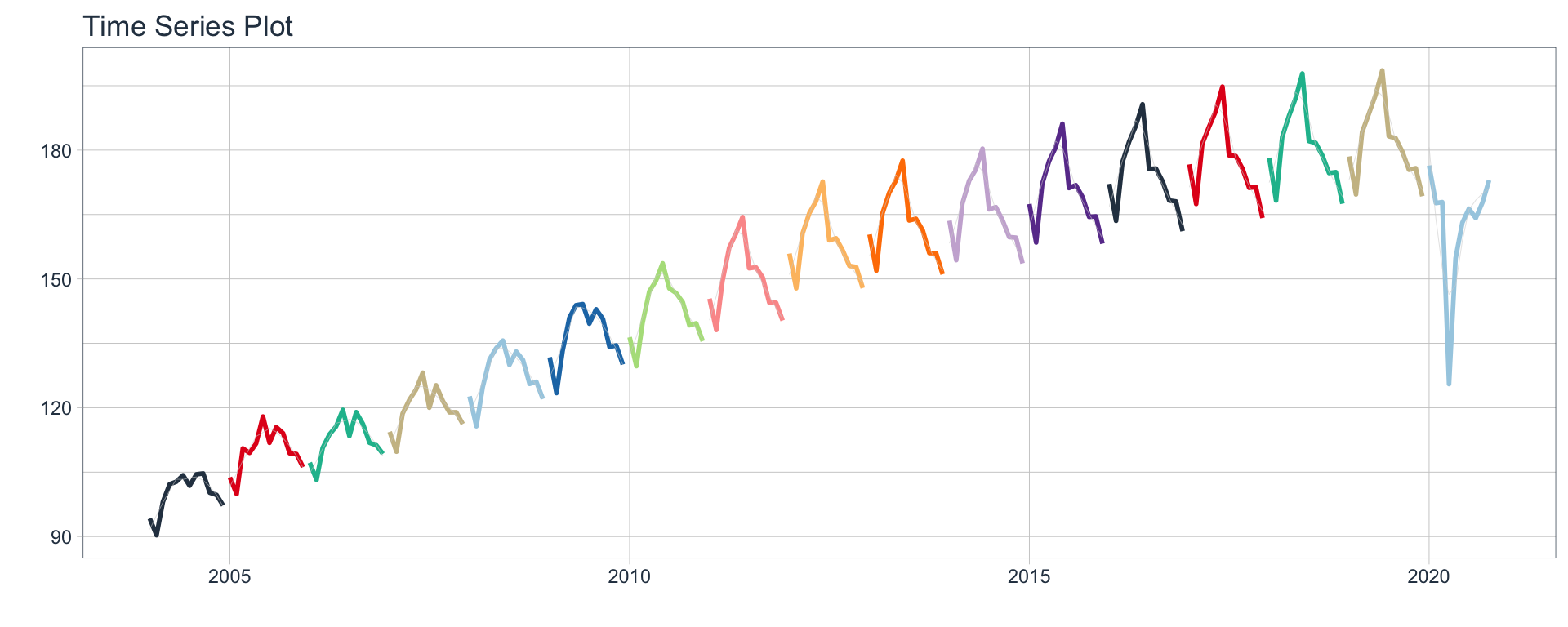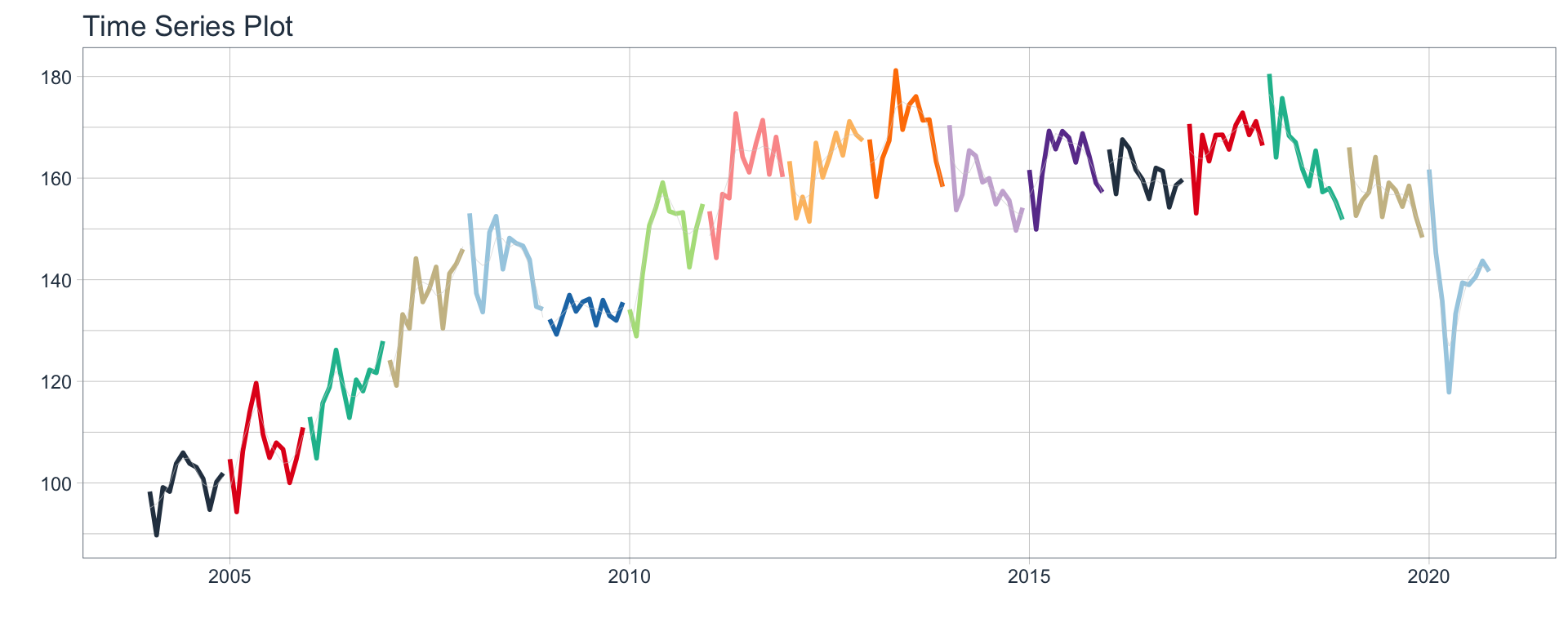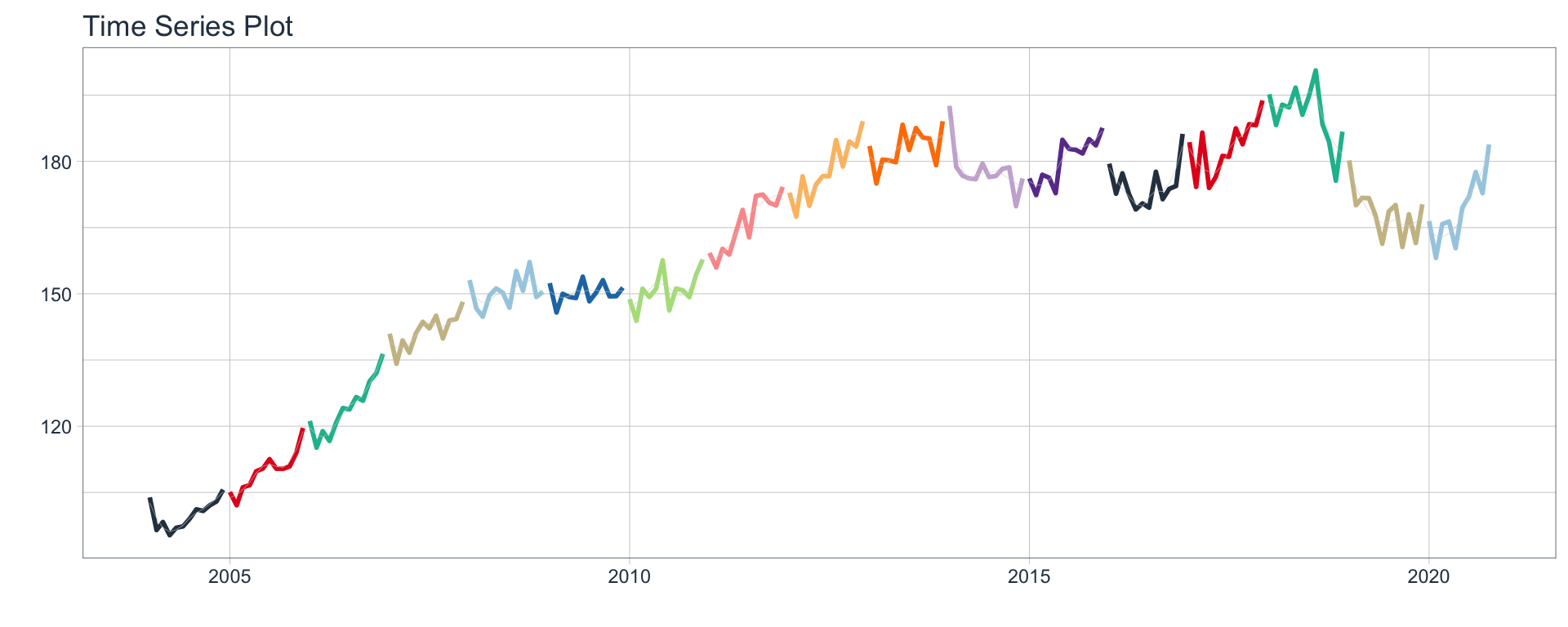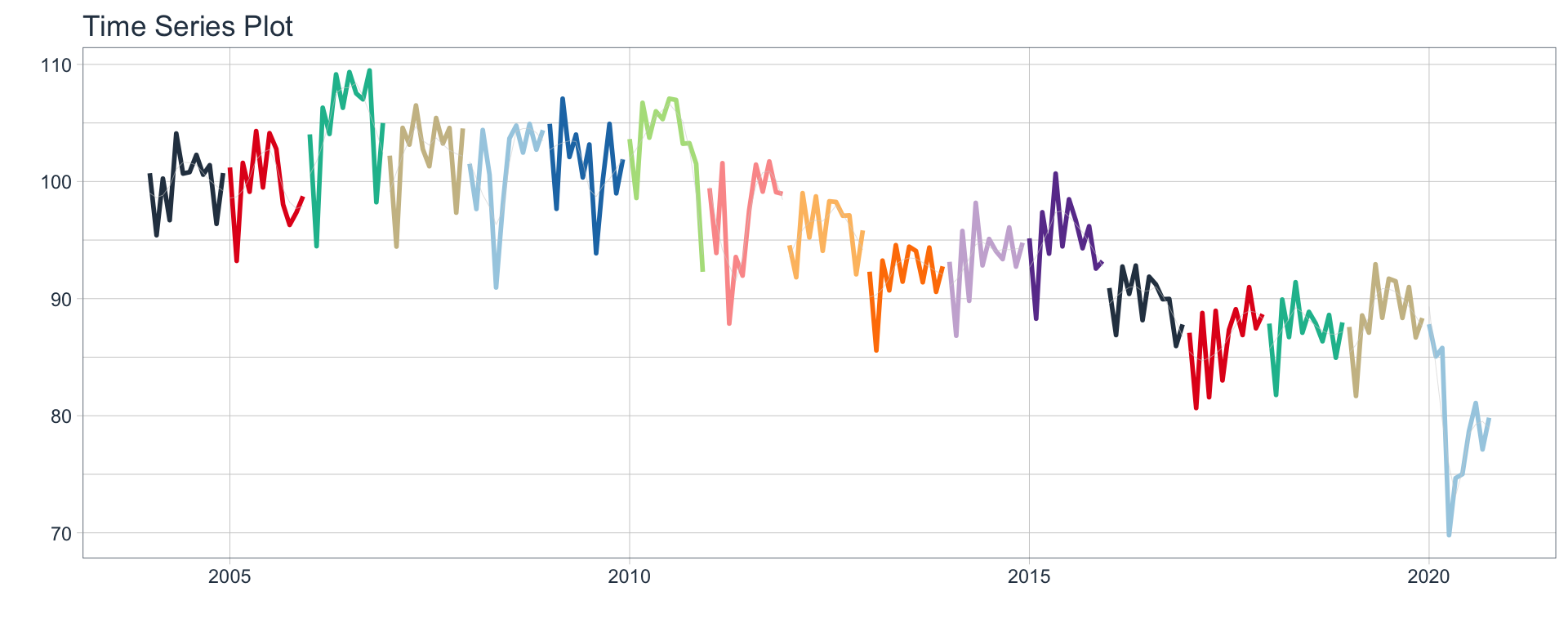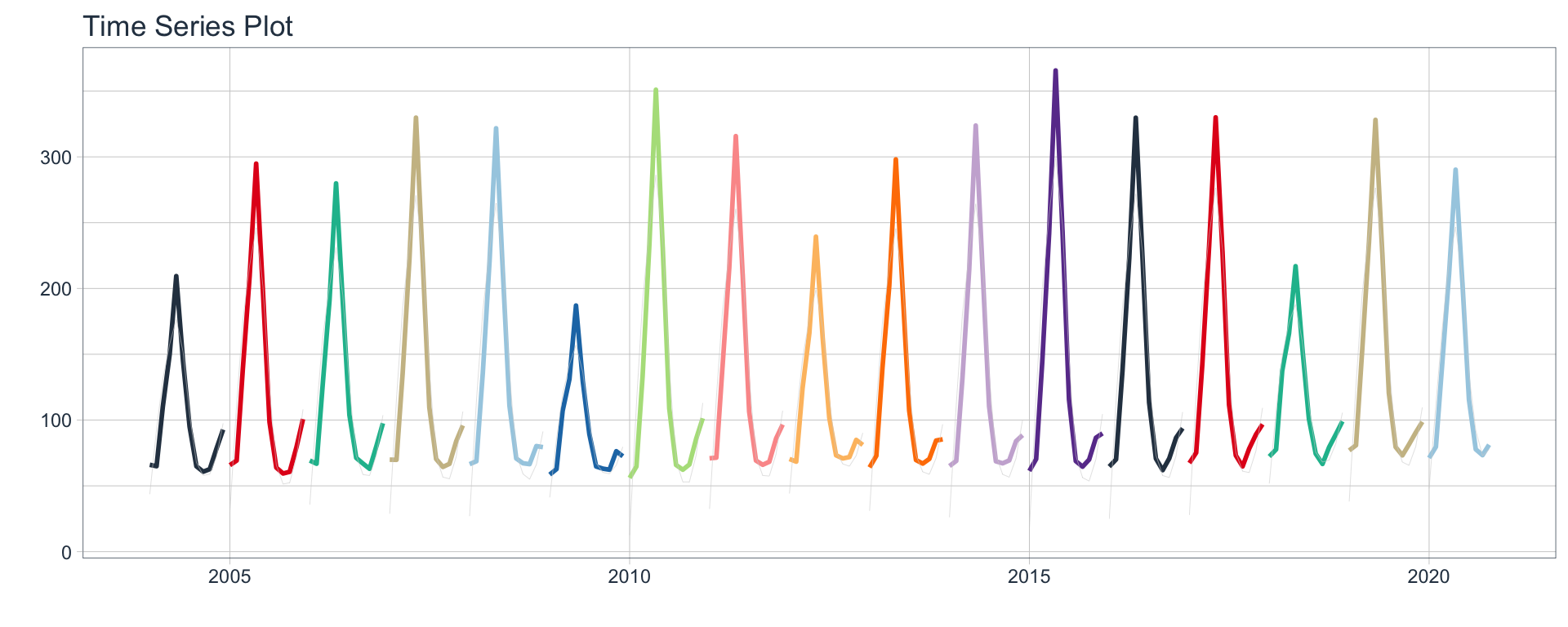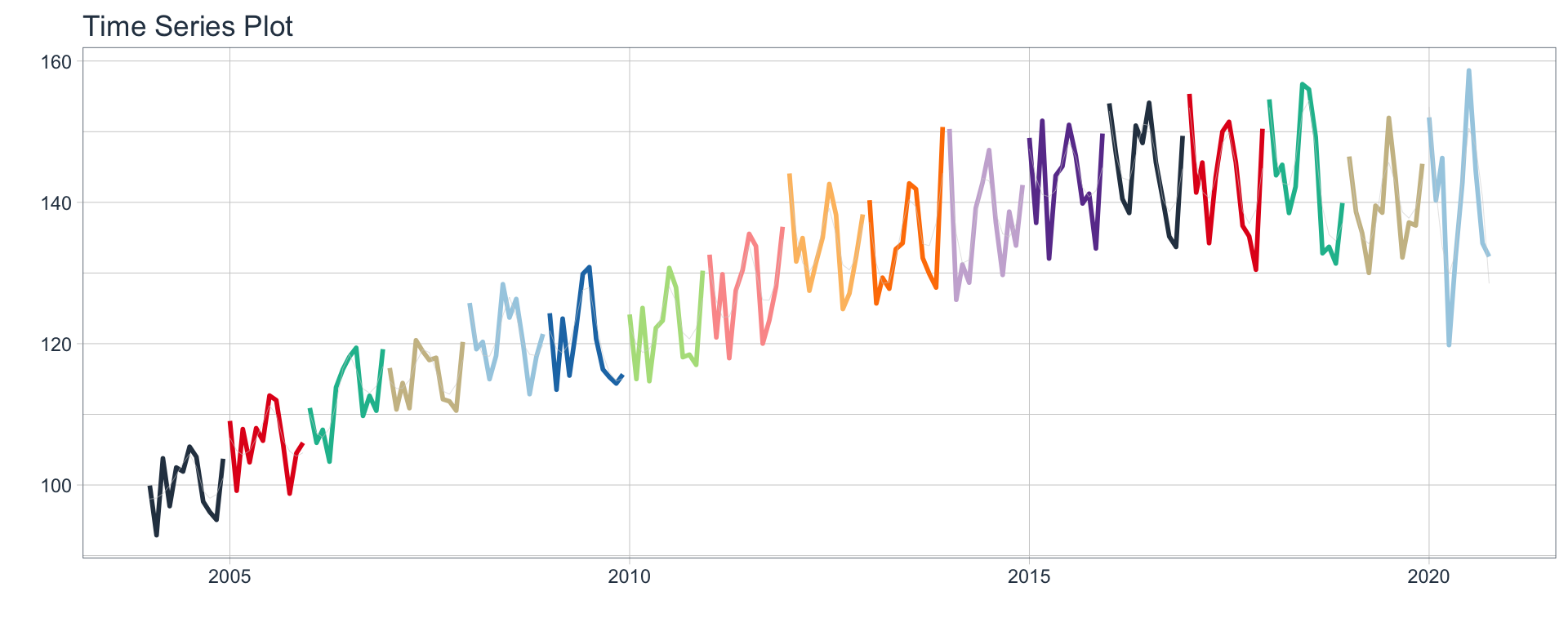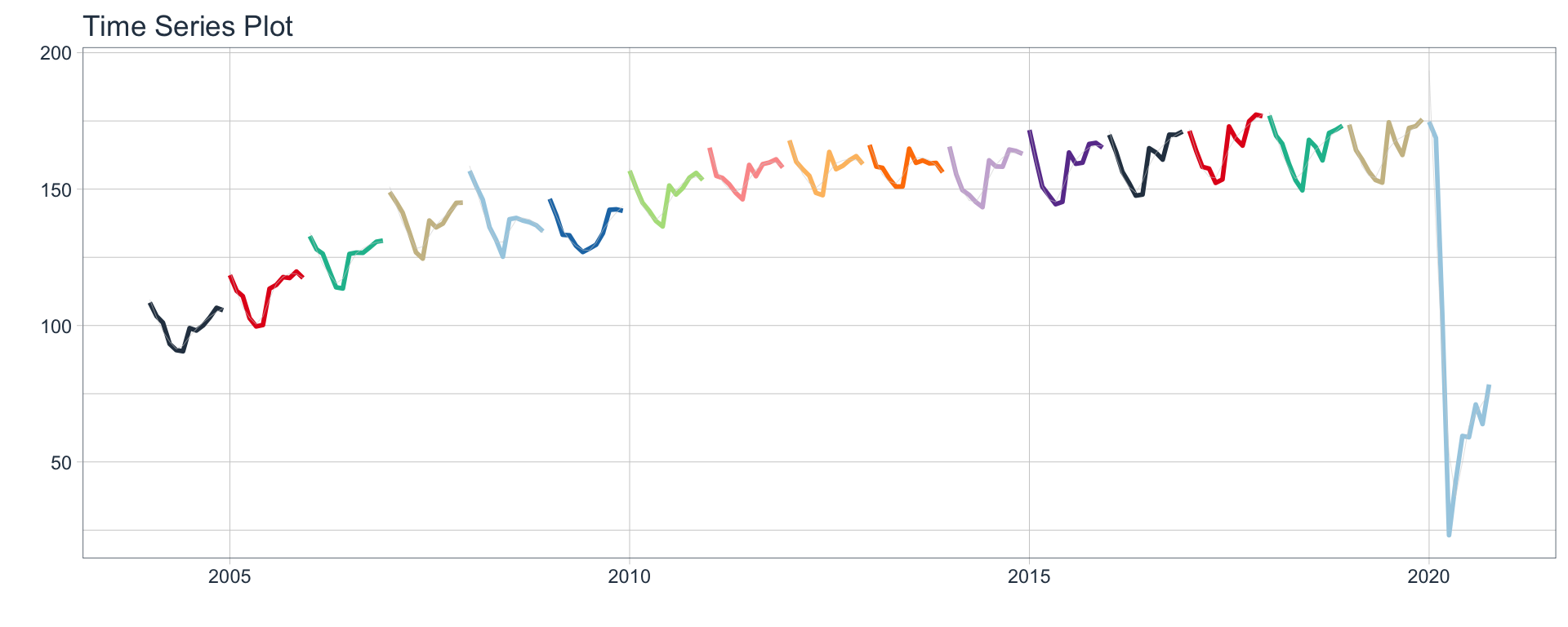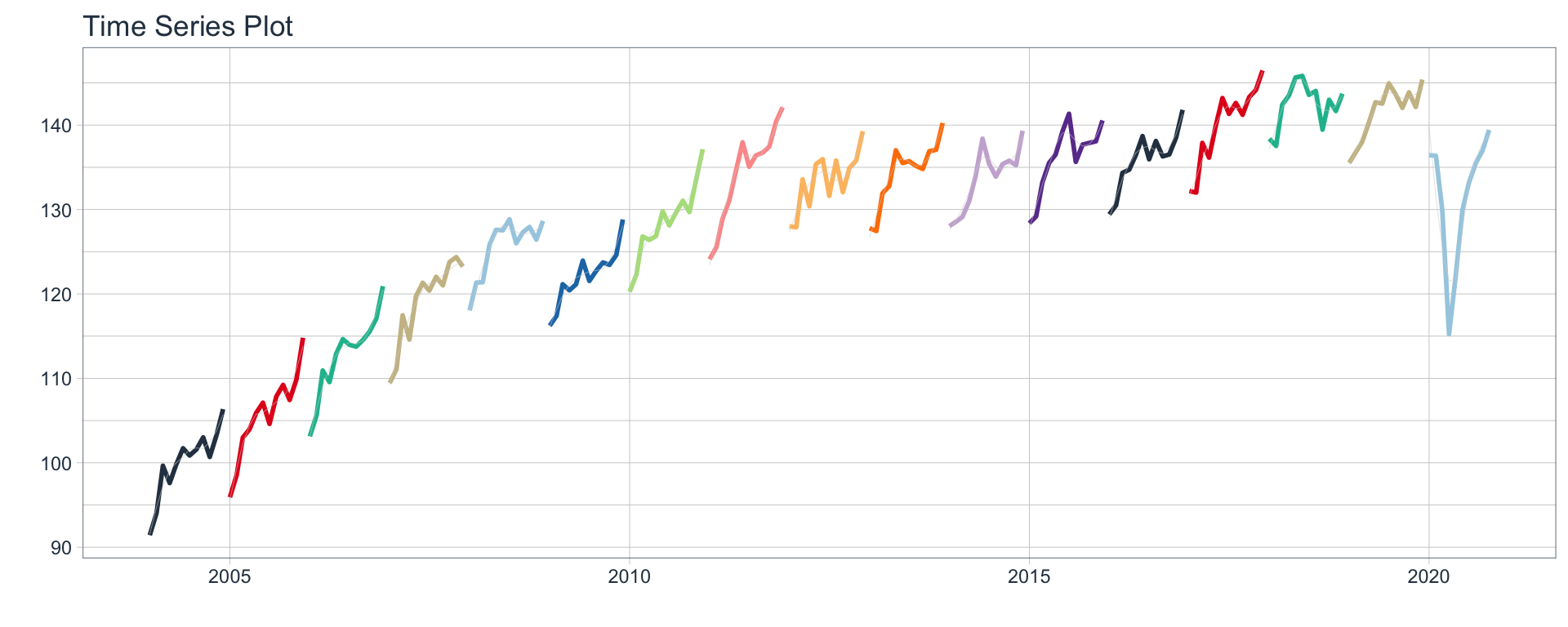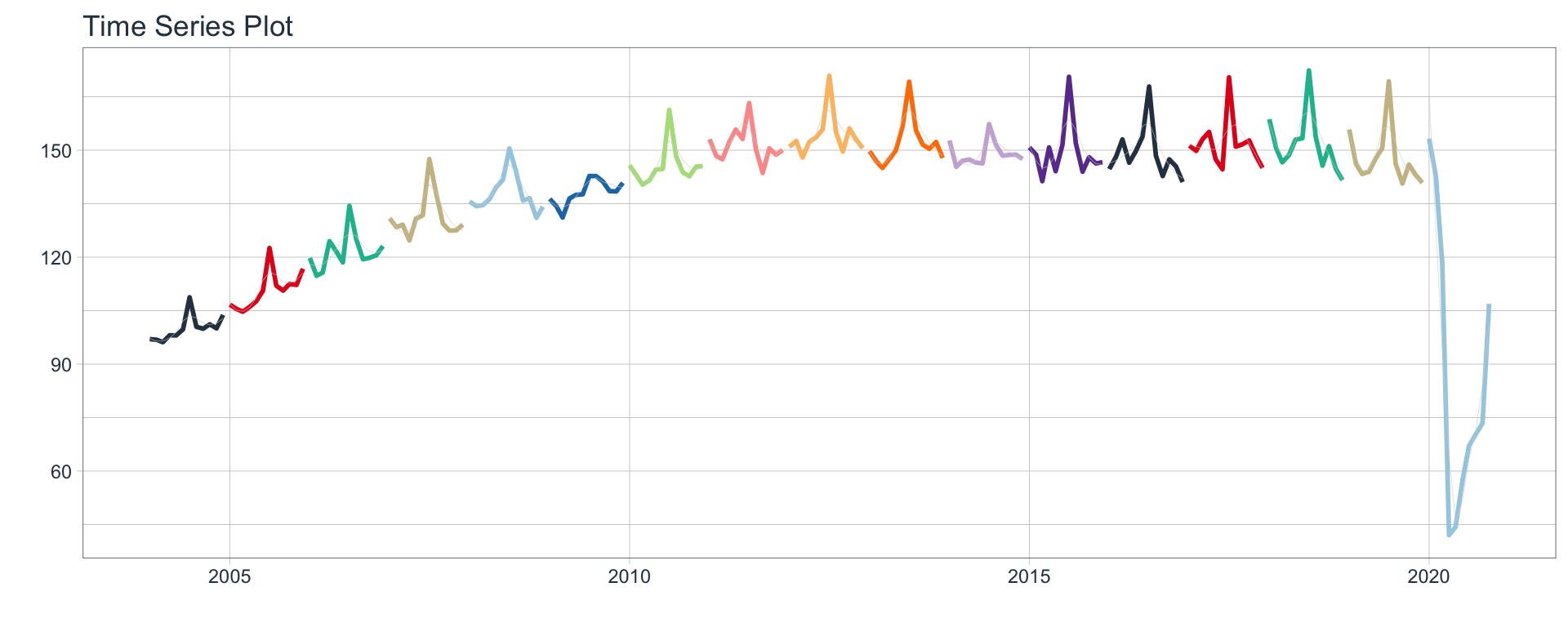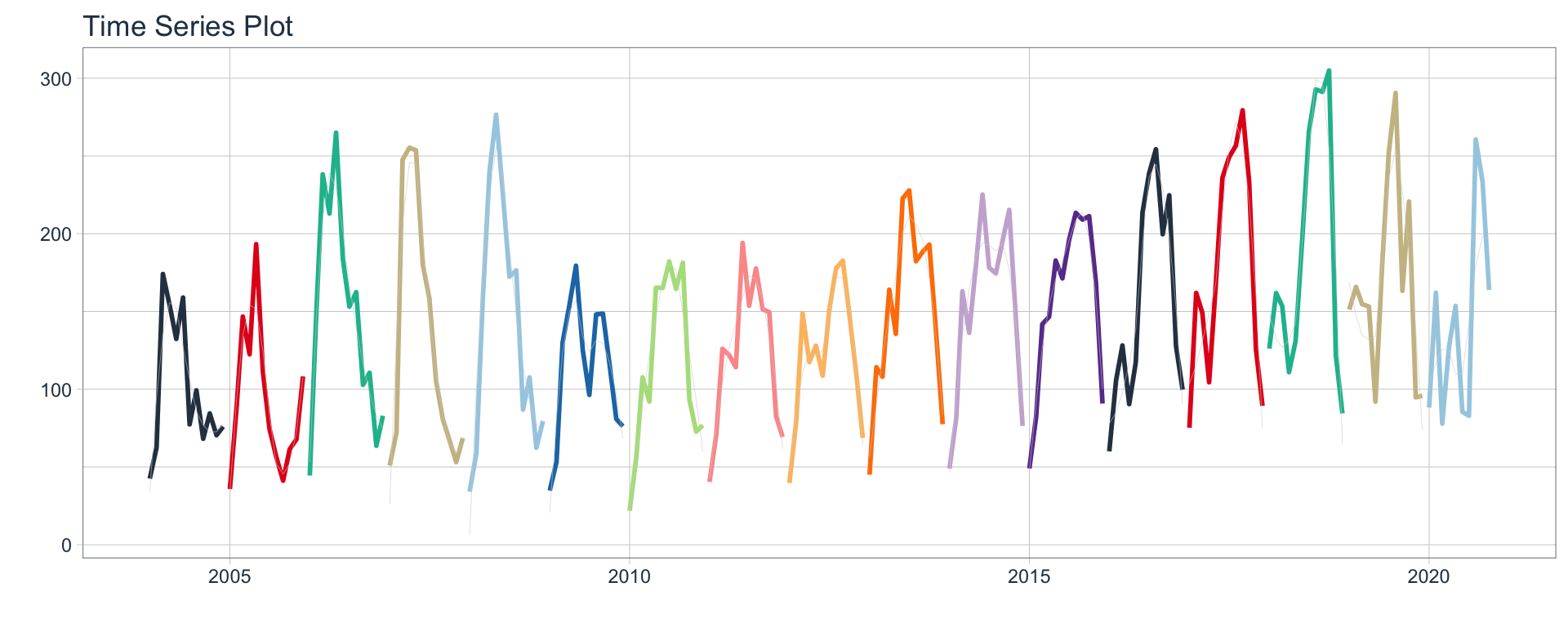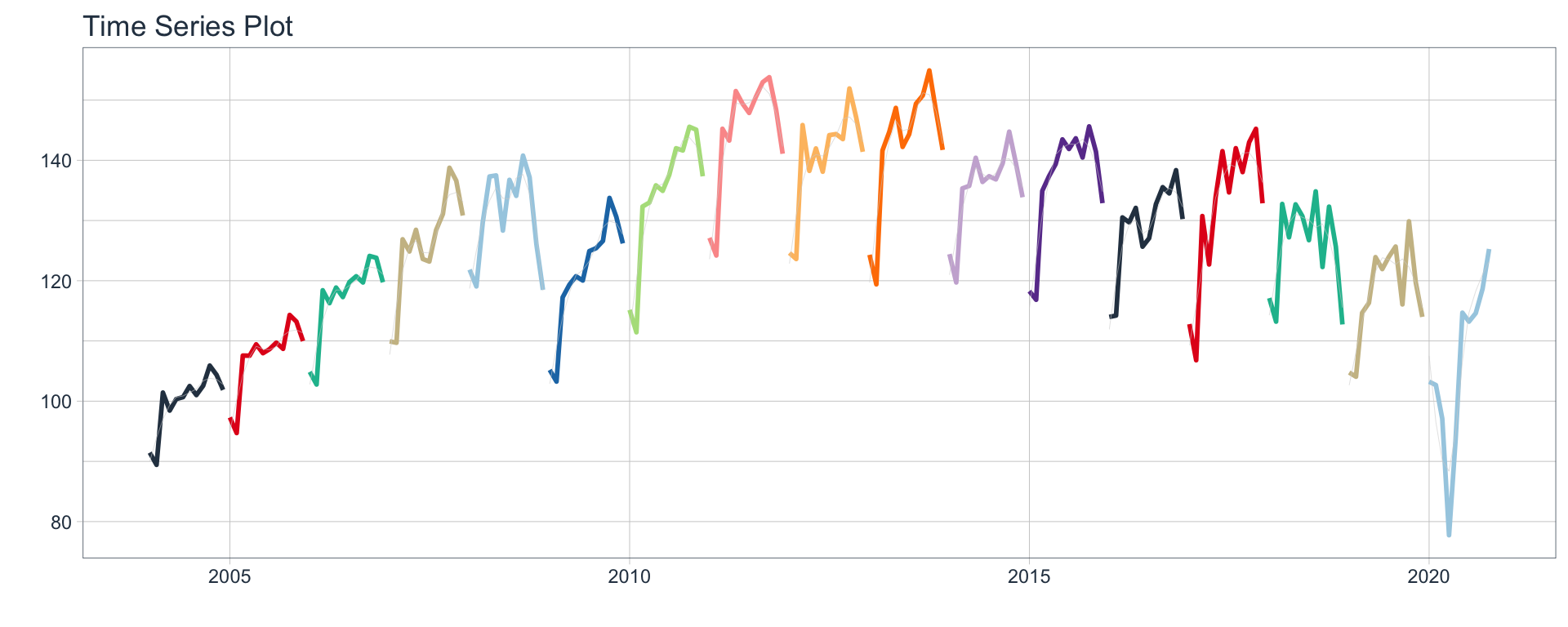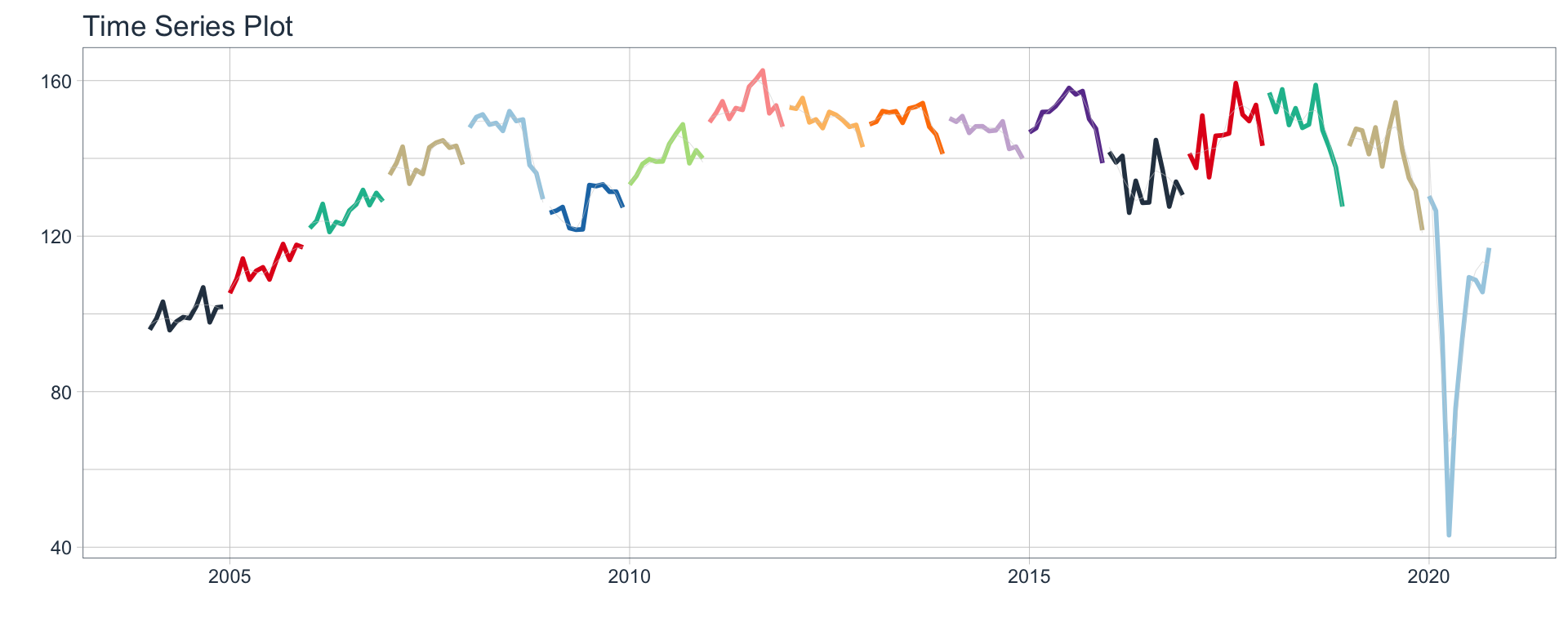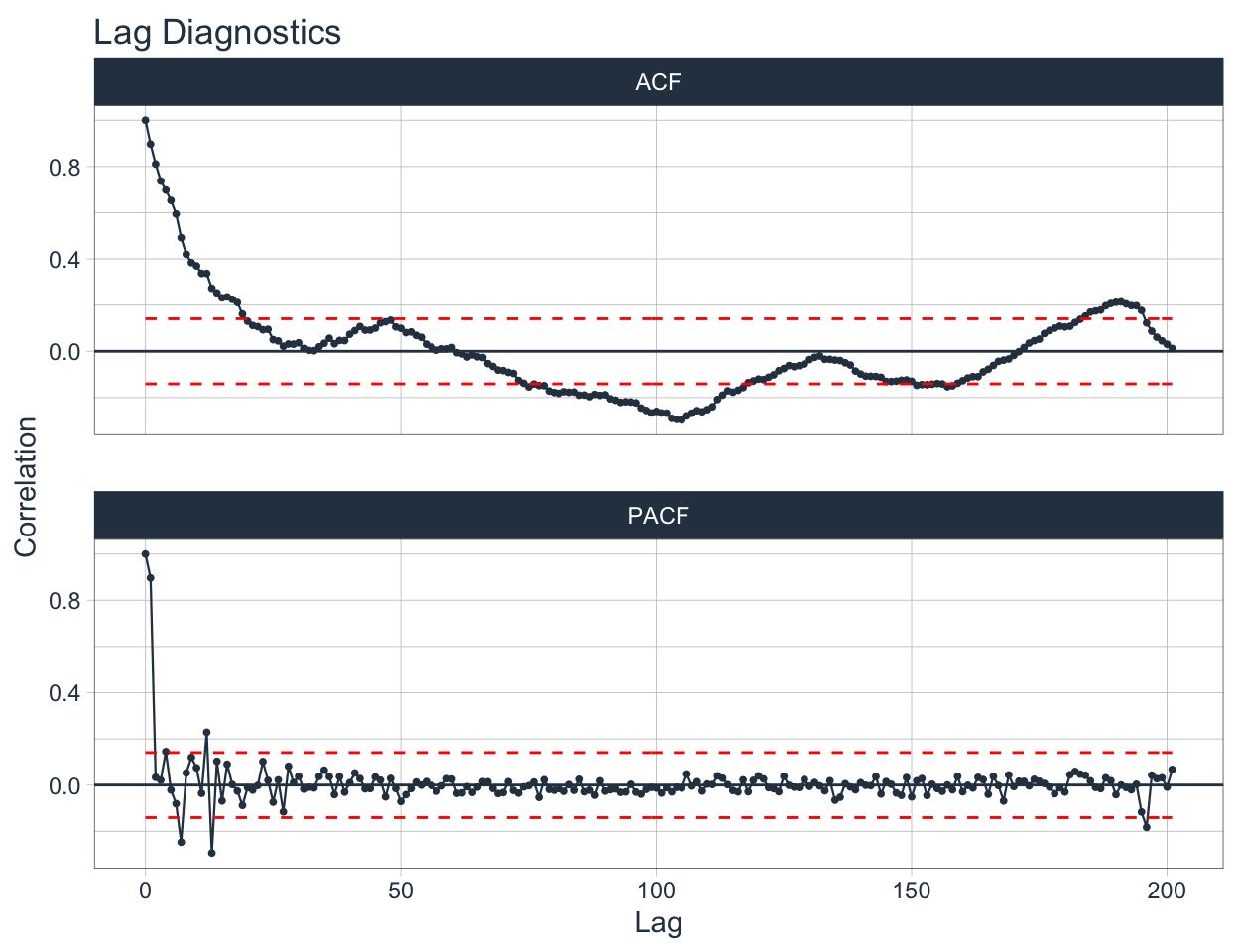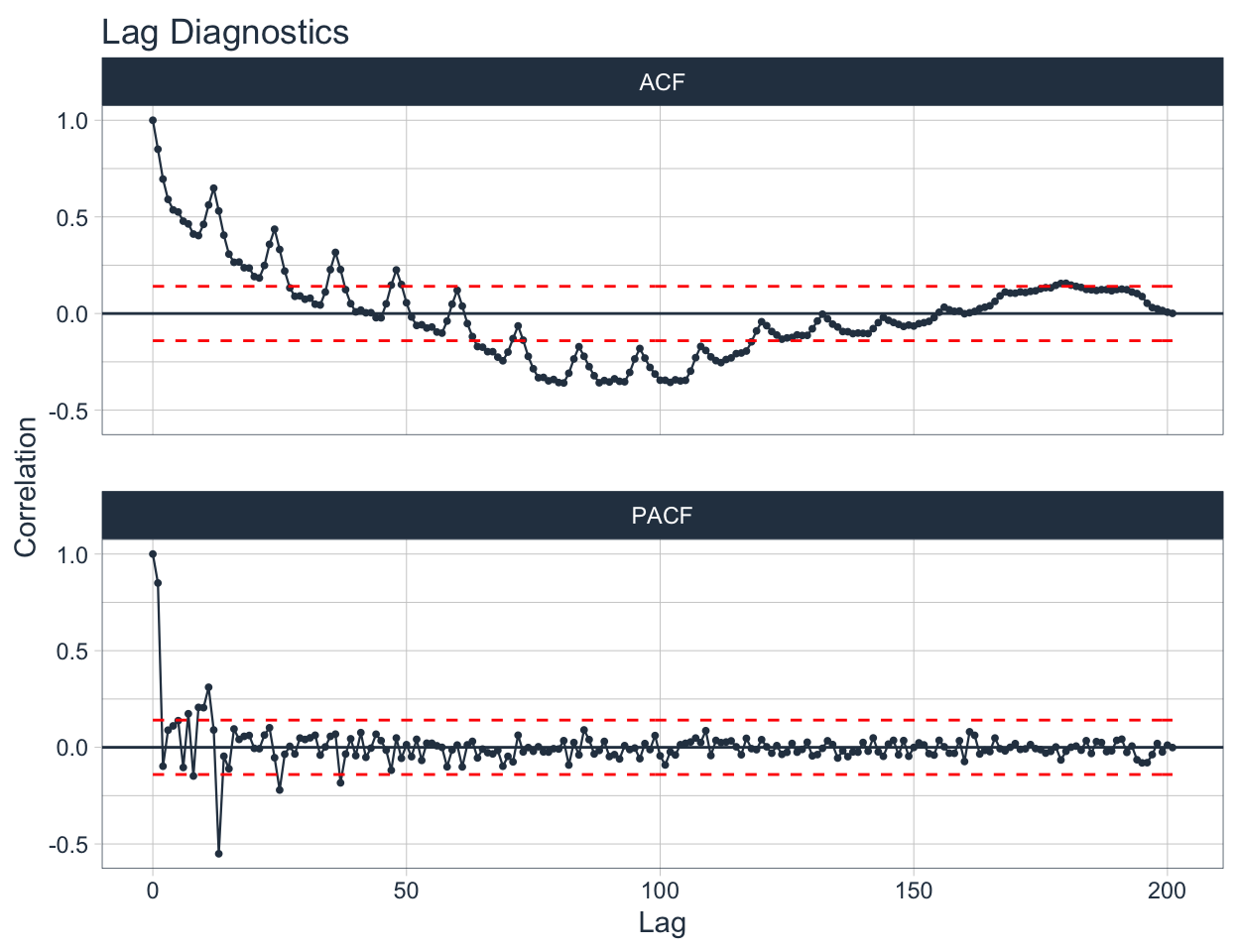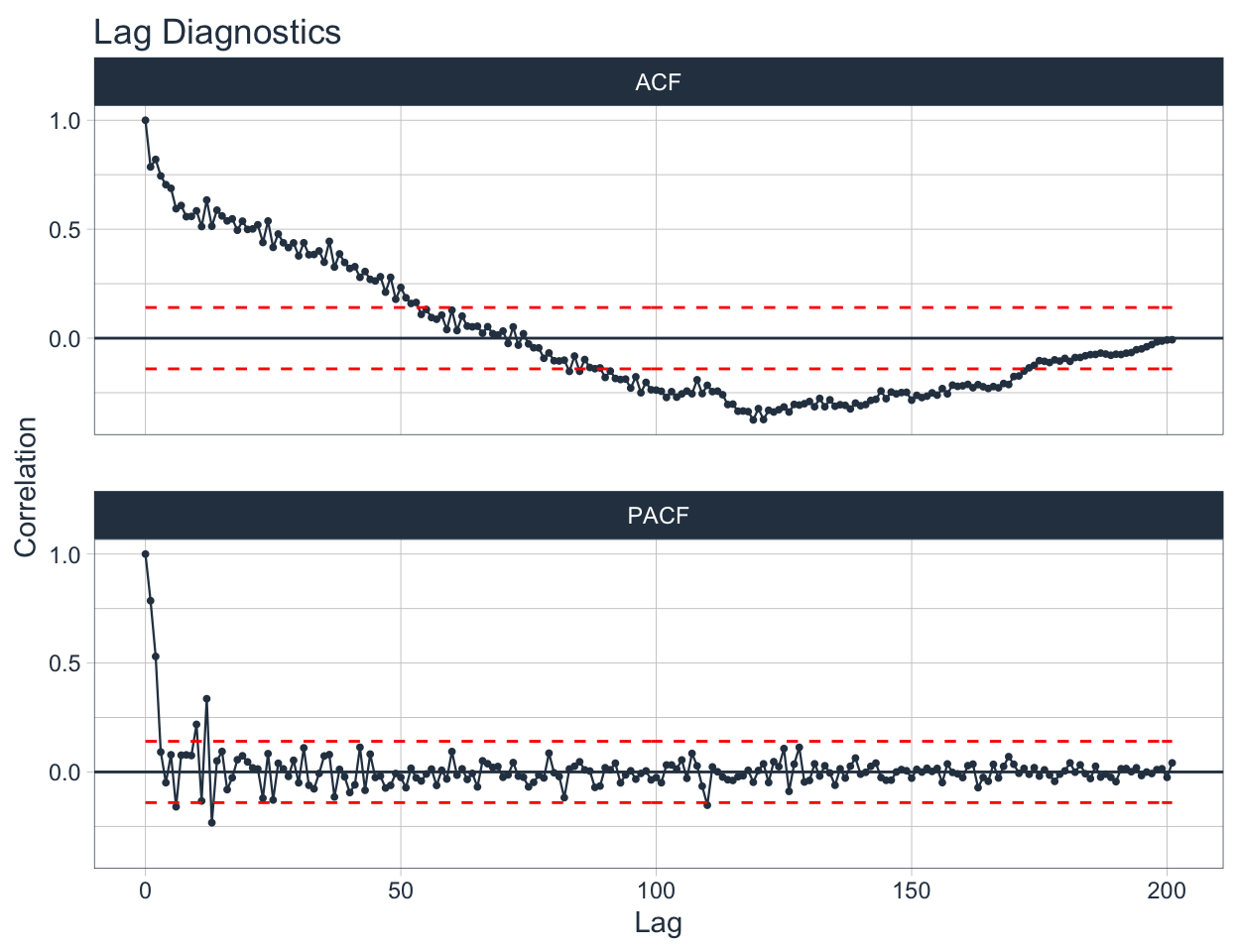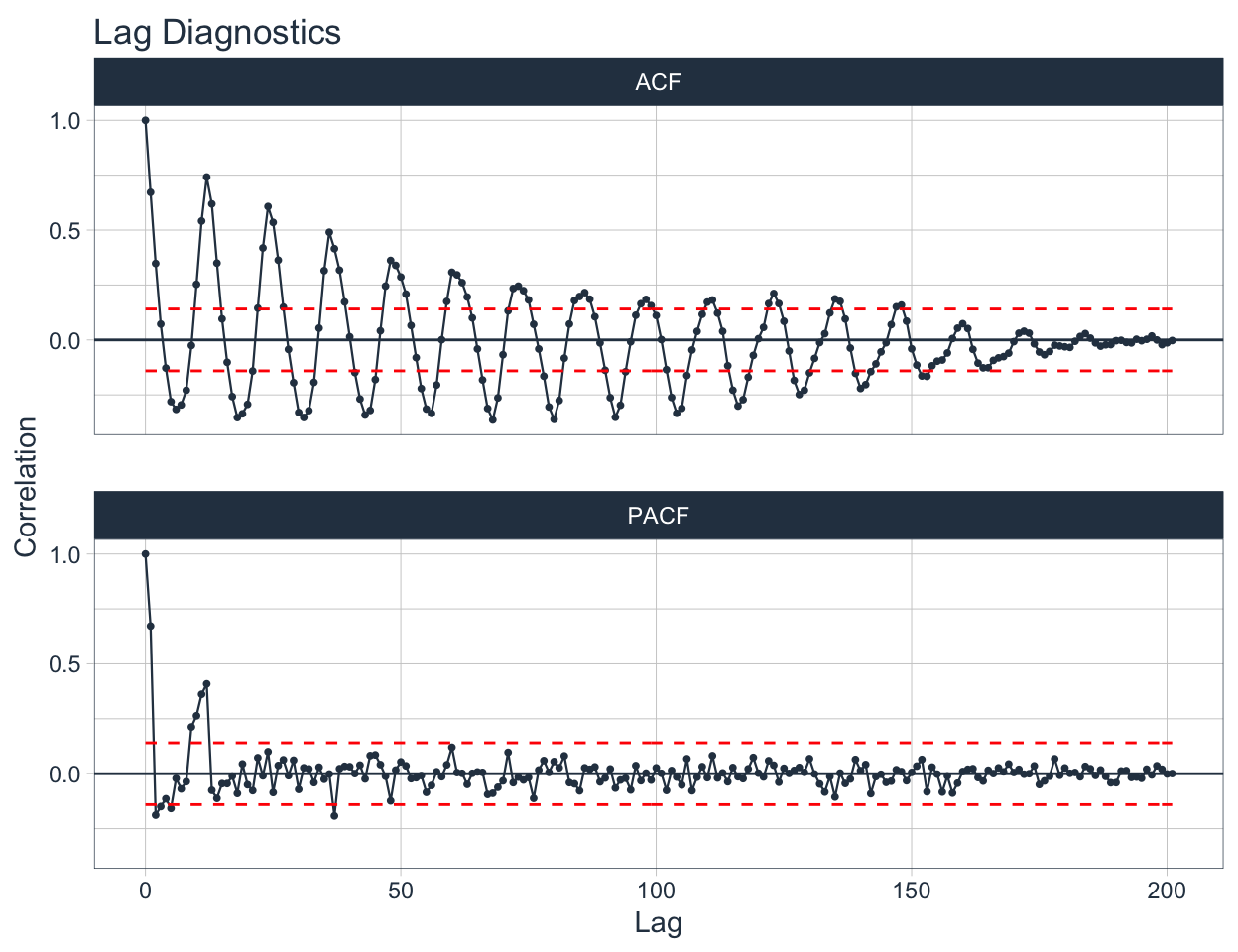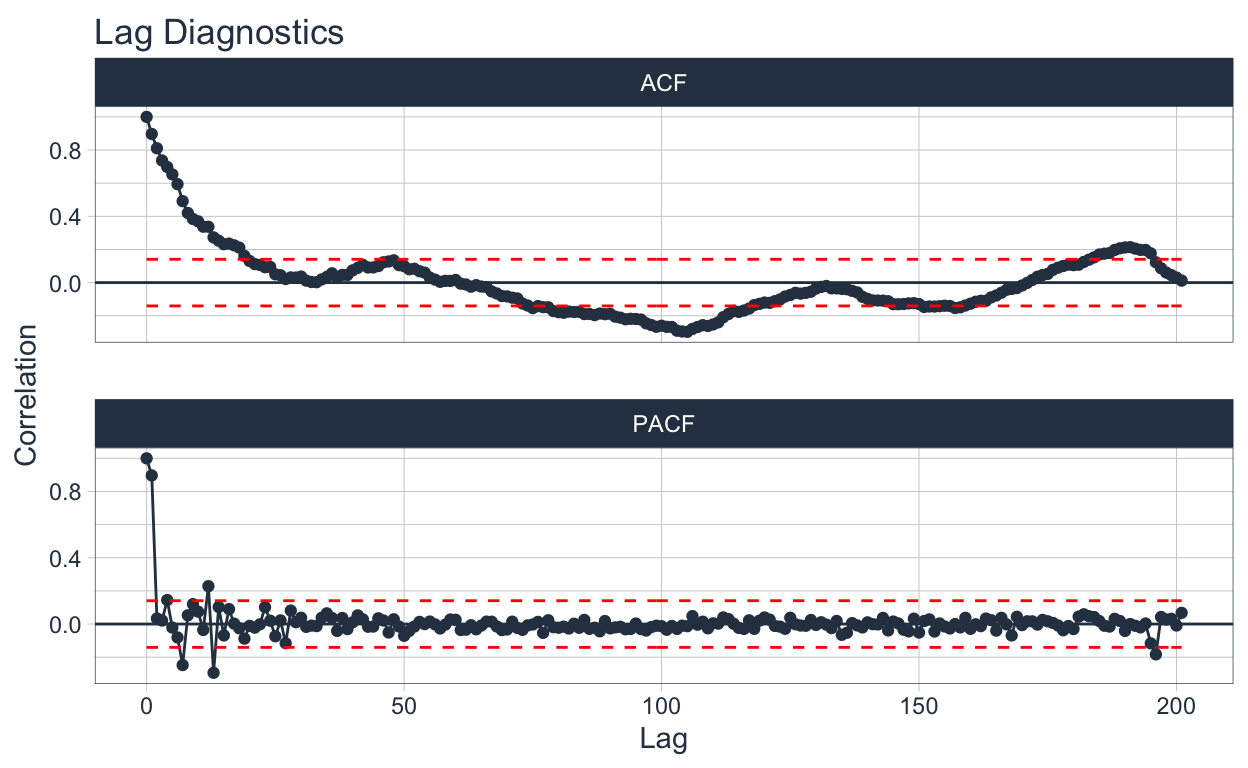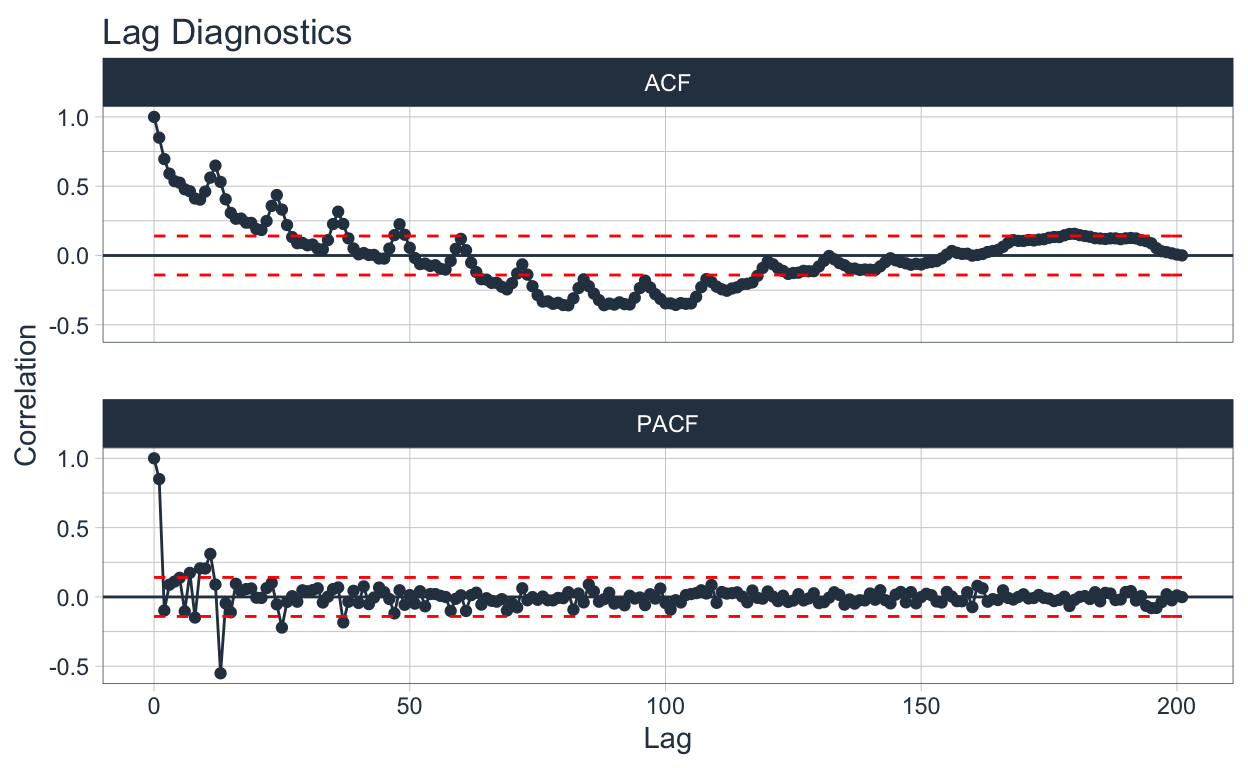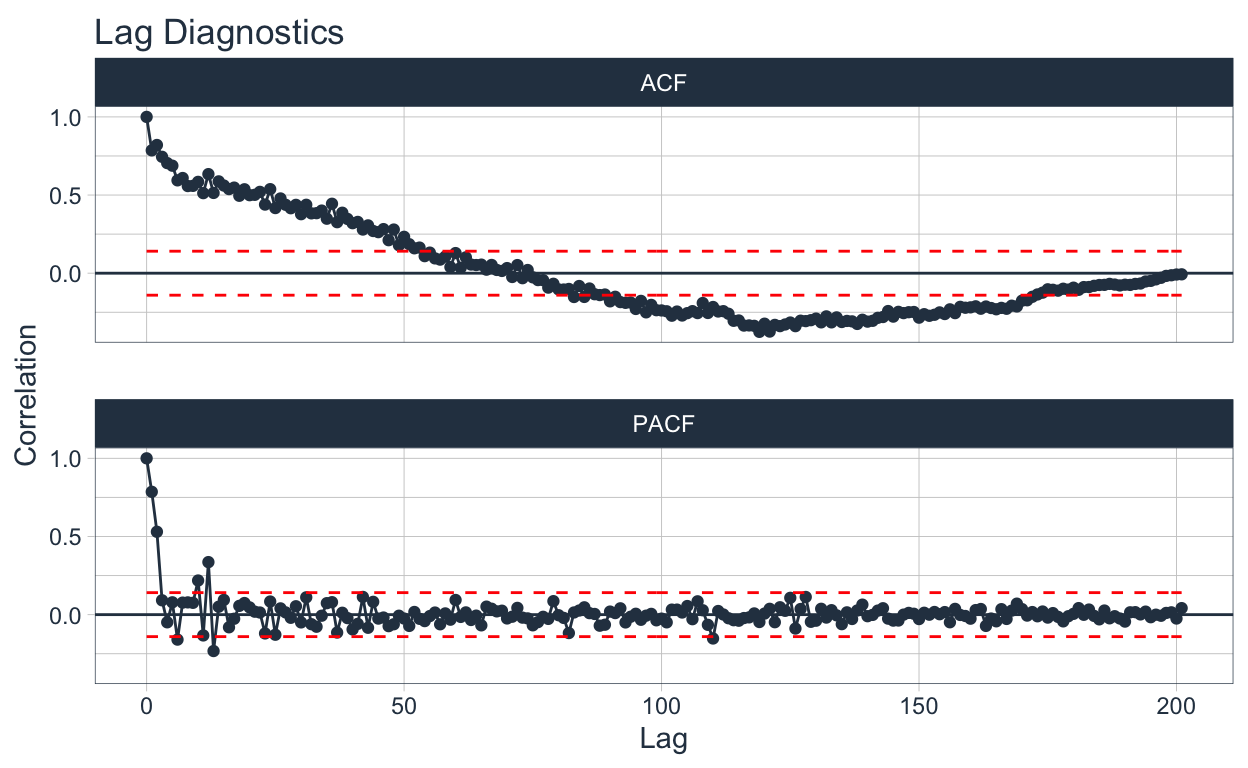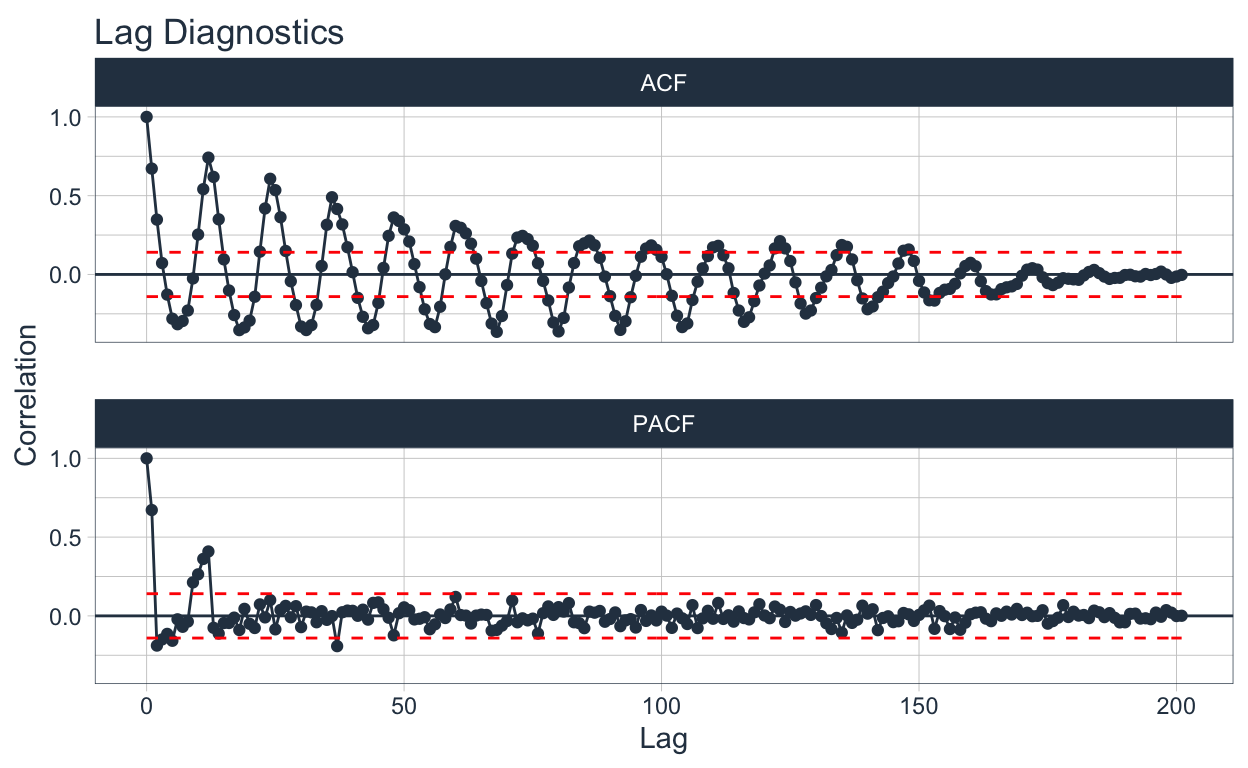Tidy tabs approach 🧙
When conducting exploratory data analysis 📈, reporting on models 🤖, or simply presenting results obtained, we usually have dozens of plots to show. For this reason, it is necessary to organize the report in a way to focus the reader’s attention on certain aspects and not overwhelm them with all the information at once.
👉 We use a Tidy approach to generate tabs in automated format from a nested tibble that contains the objects to include in each tab.
This article is based on a previous article we’ve written on time series analysis: Multiple models on multiple time series: A Tidy approach.
Libraries 📚
The necessary libraries are imported. sknifedatar
For data manipulation we used the tidyverse
library(sknifedatar)
#devtools::install_github("gadenbuie/xaringanExtra")
library(xaringanExtra)
library(lubridate)
library(timetk)
library(dplyr)
library(tidyr)
library(purrr)
library(reactable)
library(htmltools)
What are tabs? 🤔
✏️ A tab is a design pattern where content is separated into different panes, and each pane is viewable one at a time.
This is tab number 1 . 🌟 Check the following tabs for some unsolicited advice 🌟 👆
This is tab number 2

This is tab number 3

This is tab number 4

This is tab number 5. Thank you for reading this far.

How to generate tabs? 🗂️
🔹 In order to generate the tabs above, the following chunks were necessary:
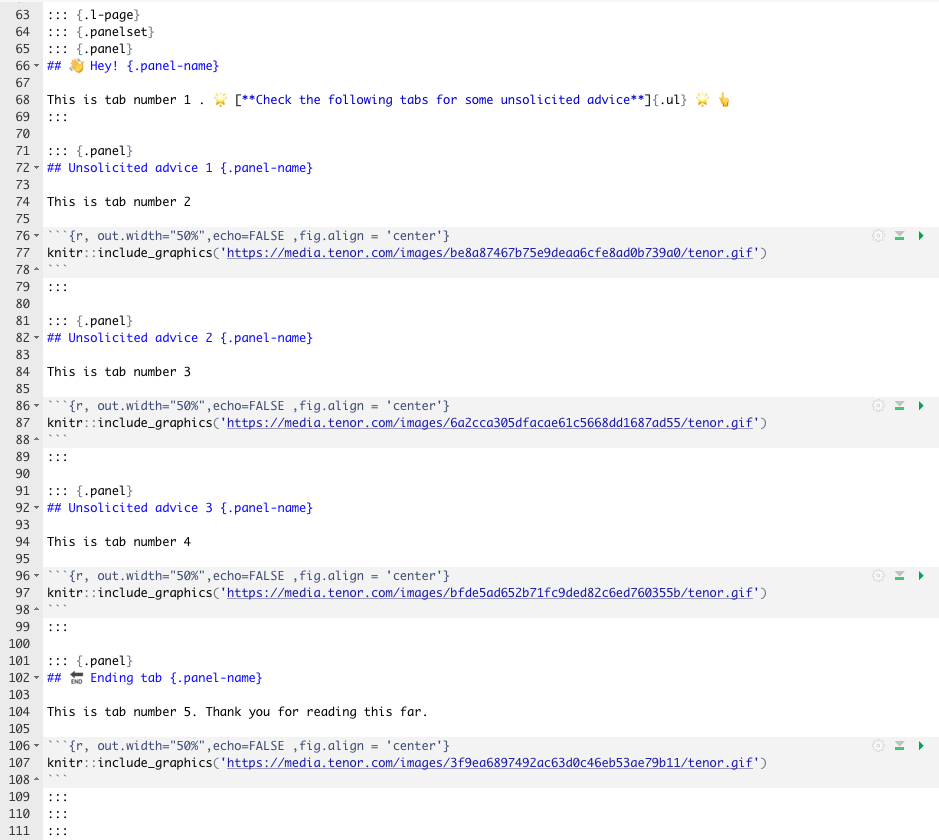
Show code
# ::: {.l-page}
# ::: {.panelset}
# ::: {.panel}
# ## 👋 Hey! {.panel-name}
#
# This is tab number 1 . 🌟 [**Check the following tabs for some unsolicited advice**]{.ul} 🌟 👆
# :::
#
# ::: {.panel}
# ## Unsolicited advice 1 {.panel-name}
#
# This is tab number 2
#
# ```{r, out.width="50%",echo=FALSE ,fig.align = 'center'}
# knitr::include_graphics('https://media.tenor.com/images/be8a87467b75e9deaa6cfe8ad0b739a0/tenor.gif')
# ```
# :::
#
# ::: {.panel}
# ## Unsolicited advice 2 {.panel-name}
#
# This is tab number 3
#
# ```{r, out.width="50%",echo=FALSE ,fig.align = 'center'}
# knitr::include_graphics('https://media.tenor.com/images/6a2cca305dfacae61c5668dd1687ad55/tenor.gif')
# ```
# :::
#
# ::: {.panel}
# ## Unsolicited advice 3 {.panel-name}
#
# This is tab number 4
#
# ```{r, out.width="50%",echo=FALSE ,fig.align = 'center'}
# knitr::include_graphics('https://media.tenor.com/images/bfde5ad652b71fc9ded82c6ed760355b/tenor.gif')
# ```
# :::
#
# ::: {.panel}
# ## 🔚 Ending tab {.panel-name}
#
# This is tab number 5. Thank you for reading this far.
#
# ```{r, out.width="50%",echo=FALSE ,fig.align = 'center'}
# knitr::include_graphics('https://media.tenor.com/images/3f9ea6897492ac63d0c46eb53ae79b11/tenor.gif')
# ```
# :::
# :::
# :::
🔎 As it can be seen, this is not so difficult. However, what if we wanted to generate 16 tabs instead of 4?
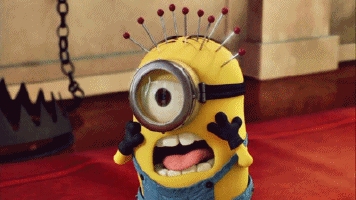
Using a tidy approach, an automatic tab generation 🧙 can be performed by nesting the objects to include in each tab. Let’s see an example.
Data 📊
For this example, time series data from the Argentine monthly economic activity estimator (EMAE) is used. This data is available in the sknifedatar package 📦.
emae <- sknifedatar::emae_series
Nested dataframes 📂
🔹 The first step is to generate a nested data frame. It includes a row per economic sector.
nest_data <- emae %>%
nest(nested_column = -sector)
nest_data
# A tibble: 16 x 2
sector nested_column
<chr> <list>
1 Comercio <tibble [202 × 2]>
2 Ensenanza <tibble [202 × 2]>
3 Administracion publica <tibble [202 × 2]>
4 Transporte y comunicaciones <tibble [202 × 2]>
5 Servicios sociales/Salud <tibble [202 × 2]>
6 Impuestos netos <tibble [202 × 2]>
7 Sector financiero <tibble [202 × 2]>
8 Mineria <tibble [202 × 2]>
9 Agro/Ganaderia/Caza/Silvicultura <tibble [202 × 2]>
10 Electricidad/Gas/Agua <tibble [202 × 2]>
11 Hoteles/Restaurantes <tibble [202 × 2]>
12 Inmobiliarias <tibble [202 × 2]>
13 Otras actividades <tibble [202 × 2]>
14 Pesca <tibble [202 × 2]>
15 Industria manufacturera <tibble [202 × 2]>
16 Construccion <tibble [202 × 2]>👀 To better understand the format of nest_data, the "nested_column" variable is disaggregated below. By clicking on each sector, it can be seen that 👉👉 each nested column includes data for the series of the selected sector. In the first row, data corresponds to the monthly activity estimator from 2004-01-01 to 2020-10-01 for the ‘Commerce’ sector.
Show code
The above interactive table was made using reactable
📌 Note that when extracting the nested_column from the first row, the data corresponding to the series of the first sector is obtained.
nest_data %>% pluck("nested_column",1)
Time series plots 🌠
👉 The evolution of each series can be observed by using a tab for each sector. This allows the visualization to be much clearer 🙌, allowing the reader to focus on each series, without having to view multiple plots of the same type.
nest_data <-
nest_data %>%
mutate(ts_plots = map(nested_column,
~ plot_time_series(.data = .x,
.date_var = date,
.value = value,
.color_var = year(date),
.interactive = FALSE,
.line_size = 1,
.smooth_color = 'lightgrey',
.smooth_size = 0.1,
.legend_show = FALSE
)))
nest_data
# A tibble: 16 x 3
sector nested_column ts_plots
<chr> <list> <list>
1 Comercio <tibble [202 × 2]> <gg>
2 Ensenanza <tibble [202 × 2]> <gg>
3 Administracion publica <tibble [202 × 2]> <gg>
4 Transporte y comunicaciones <tibble [202 × 2]> <gg>
5 Servicios sociales/Salud <tibble [202 × 2]> <gg>
6 Impuestos netos <tibble [202 × 2]> <gg>
7 Sector financiero <tibble [202 × 2]> <gg>
8 Mineria <tibble [202 × 2]> <gg>
9 Agro/Ganaderia/Caza/Silvicultura <tibble [202 × 2]> <gg>
10 Electricidad/Gas/Agua <tibble [202 × 2]> <gg>
11 Hoteles/Restaurantes <tibble [202 × 2]> <gg>
12 Inmobiliarias <tibble [202 × 2]> <gg>
13 Otras actividades <tibble [202 × 2]> <gg>
14 Pesca <tibble [202 × 2]> <gg>
15 Industria manufacturera <tibble [202 × 2]> <gg>
16 Construccion <tibble [202 × 2]> <gg> 📽 First, a column called “ts_plots” is added, where we store the visualizations of the time series. For this we apply the function “plot_time_series” on each series stored in the column “nested_column” through the function "map". The function plot_time_series is included on the timetk
nest_data %>% pluck("ts_plots",1)

Perfect, but … if we wanted to graph all the time series, how could we do it? 🤔
The “automagic_tabs” function of the sknifedatar package was created for this. It receives 3 main arguments:
input_data: The nested dataframe that we have created 💾, in our case, the “nest_data” object.
panel_name: The name of the column of the nested dataframe where the series names are, these names will be the titles of each tabs 📝. In our case, “sector.”
.output: The name of the column of the nested dataframe that stores the graphs to be displayed 📈. In our case, “ts_plots.”
🛠 Additional arguments: you can specify the width of the set of panels in “.layout,” 👉👉👉 in addition to being able to specify all the parameters available on rmarkdown chunks 🙌 (fig.align, fig.width, …)
🔹 Let’s see the application below, first we invoke the “use_panelset" function from the xaringanExtra
xaringanExtra::use_panelset()
`r automagic_tabs(input_data = nest_data, panel_name = "sector", .output = "ts_plots",
.layout = "l-page", fig.heigth=1, fig.width=10)`

⚠ Note something important, 👉👉👉 the function does not run in a chunk, it is invoked “inline” (or an r function between apostrophes) within the Rmarkdown document. Below is the complete code:
#---
#title: "automagic_tabs"
#author: "sknifedatar"
#output: html_document
#---
#
#```{r}
#library(sknifedatar)
#library(timetk)
#```
#
#```{r}
#emae <- sknifedatar::emae_series
#
#nest_data <- emae %>%
# nest(nested_column = -sector) %>%
# mutate(ts_plots = map(nested_column,
# ~ plot_time_series(.data = .x,
# .date_var = date,
# .value = value,
# .interactive = FALSE,
# .line_size = 0.15)
# ))
#```
#
#```{r}
#xaringanExtra::use_panelset()
#```
#
#`r automagic_tabs(input_data = nest_data, panel_name = "sector", .output = "ts_plots")`
🔹 Copy the code above, paste it into a new Rmarkdown file, and hit knit the document to get the tabs.
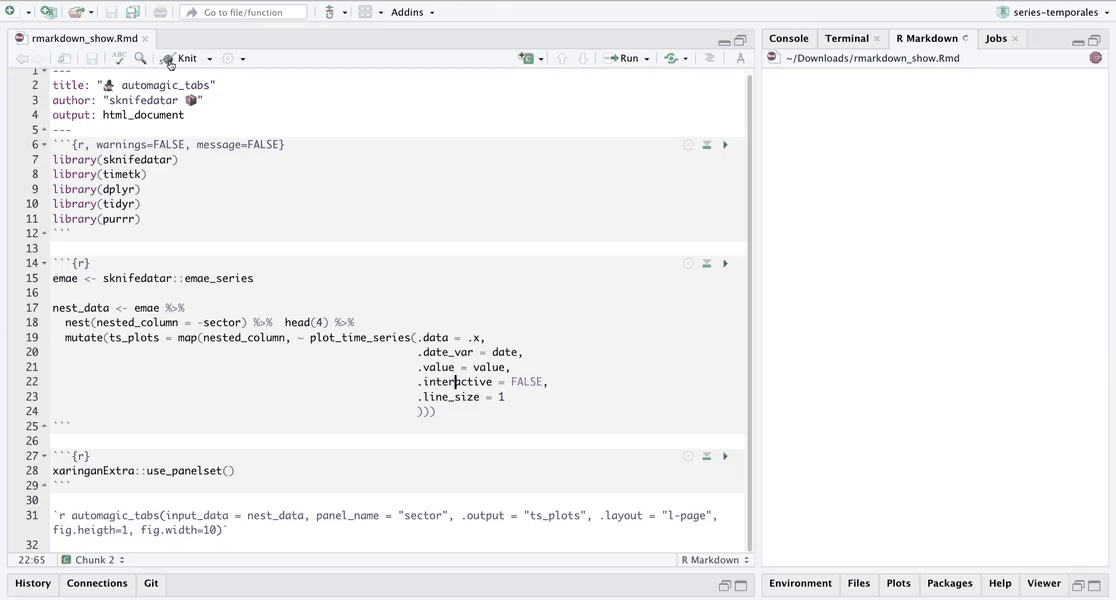
Decomposition and autocorrelation 💡
Below is a brief exploratory analysis 💫 of 4 of the series, including decomposition and autocorrelation analysis. The results are presented in tabs, one for each sector for each type of analysis.
🔹 First we filter 4 series and add emojis to their names 😂.
data_filter <-
nest_data %>%
filter(sector %in% c(
'Mineria',
'Industria manufacturera',
'Pesca',
'Construccion'
)) %>%
mutate(
sector = case_when(
sector == 'Industria manufacturera' ~ 'Industria manufacturera ⚙️',
sector == 'Pesca' ~ 'Pesca 🐠',
sector == 'Construccion' ~ 'Construccion 🏠',
sector == 'Mineria' ~ 'Mineria 🏔'
)) %>%
arrange(sector)
data_filter
# A tibble: 4 x 3
sector nested_column ts_plots
<chr> <list> <list>
1 Construccion 🏠 <tibble [202 × 2]> <gg>
2 Industria manufacturera ⚙️ <tibble [202 × 2]> <gg>
3 Mineria 🏔 <tibble [202 × 2]> <gg>
4 Pesca 🐠 <tibble [202 × 2]> <gg> 🔹 Now the decomposition plots are added in the STL column. This is later plotted with the function automagic_tabs.
data_filter <- data_filter %>%
mutate(ACF = map(nested_column,
~ plot_acf_diagnostics(.data = .x, date, value,
.show_white_noise_bars = TRUE,
.white_noise_line_color = 'red',
.white_noise_line_type = 2,
.line_size = 0.4,
.point_size = 0.7,
.interactive = FALSE)))
📌 STL plots contain 4 nested graphs, therefore we will increase the height of the figure to 8 and change the layout.
`r automagic_tabs(input_data=data_filter ,panel_name="sector",.output="ACF" ,
fig.height=5 ,.layout="l-body-outset")`
🔹 Finally the autocorrelation plots are added in the ACF column. This is also plotted on tabs with the automagic_tabs function.
data_filter <- data_filter %>%
mutate(ACF = map(
nested_column,
~ plot_acf_diagnostics(.data = .x, date, value,
.show_white_noise_bars = TRUE,
.white_noise_line_color = 'red',
.white_noise_line_type = 2,
.line_size = 0.5,
.point_size = 1.5,
.interactive = FALSE
)
))
data_filter
# A tibble: 4 x 4
sector nested_column ts_plots ACF
<chr> <list> <list> <list>
1 Construccion 🏠 <tibble [202 × 2]> <gg> <gg>
2 Industria manufacturera ⚙️ <tibble [202 × 2]> <gg> <gg>
3 Mineria 🏔 <tibble [202 × 2]> <gg> <gg>
4 Pesca 🐠 <tibble [202 × 2]> <gg> <gg> `r automagic_tabs(input_data = data_filter , panel_name = "sector", .output = "ACF",
.layout="l-body-outset")`
The emojis are displayed in the tab titles 🤩🤩🤩.
Thank you very much for reading us 👏👏👏.
